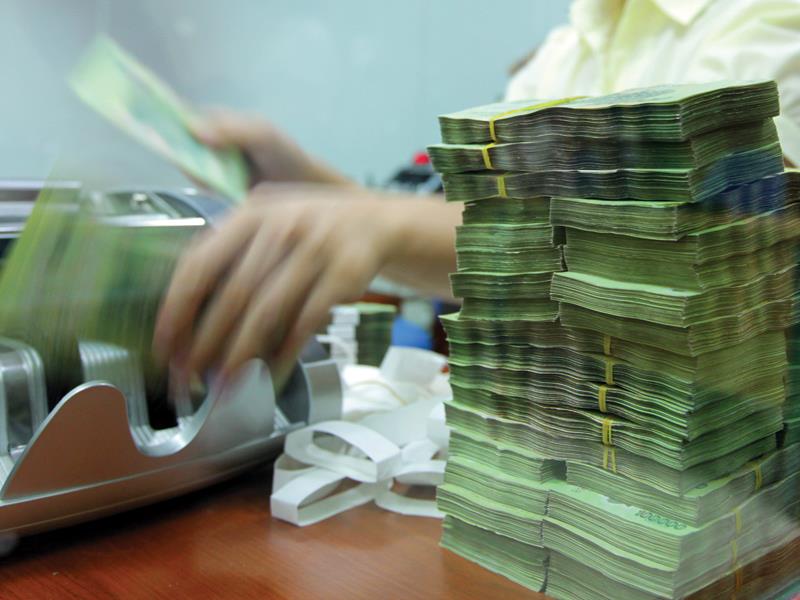Vietnam preps for borderless market
 |
Counting on changes
Under the ASEAN Economic Community (AEC), a singly functioning regional financial market is expected to be formed by 2020, in line with the ASEAN Financial Integration Framework (AFIF). This framework will transform the landscape of the regional financial market through the liberation of capital account systems and a connected capital market.
Breaking it down further, financial integration will take place through the increased freedom of cross-border financial services, the removal of restrictions on regional banks, and on foreign exchange transactions in capital accounts, FDIs, and portfolio investments.
According to Tharabodee Serng Adichaiwit, the Ho Chi Minh City-based general manager at Bangkok Bank Public (Vietnam), due to regulatory and development gaps between each country’s banking sector, it is unlikely that authorities in any AEC member country will open their financial market completely until their banks are ready.
“The AEC blueprint has a pre-agreed flexibility that allows each country to opt out of any financial services that they don’t want to liberalise,” noted Adichaiwit, adding that “the face of the regional banking sector will take time to change”.
In Vietnam’s case, Adichaiwit told VIR that while the integration of the AEC’s financial markets would not take place until 2020, foreign and regional financial institutions would still have to count on the financial liberalisation plan of Vietnamese authorities to actually oversee any development in the meantime.
Openness vs. foreign ownership limit (FOL)
Following the formation of the AEC, all countries in the community are en route to opening their service sectors, with a minimum openness of 70 per cent.
“Over the last few years, we’ve already seen the [Vietnamese] market open up to foreign investors quite significantly, both in terms of ownership as well as investment. That’s a very big step in terms of opening up the economy to foreign investors,” said Chidu Narayanan, Standard Chartered economist for Asia.
As the AEC adopts the principle of ASEAN-X that allows some of its members to perform their commitments later than others, Vietnam may choose to open 40-50 per cent of its banking sector on a case-by-case basis for a number of banks. The sector’s foreign ownership limit (FOL) is likely to be untied from the current 30 per cent rate to 40 - 50 per cent, and by 2020, there will be virtually no barrier in the banking sector among AEC countries.
“It is undeniable that financial services are the essential backbone of a country, as they facilitate trade and investment within the economy. The FOL is thus a highly sensitive issue to be prudently considered by the central bank and government,” said Bangkok Bank’s Adichaiwit.
Adichaiwit pointed out that the removal of the FOL could herald foreign investments into the local banking sector, as foreign investors can take advantage of the already-established branch network, customer base, and human resources at local banks. This would allow them to tap into the potential market of 49 million people that still do not use banking services here, according to data by the World Bank. “It is the most effective way to bypass the many difficulties involved in building one from scratch,” Adichaiwit said.
“The FOL is therefore not just one of Vietnam’s key commitment issues to help liberalise its financial system, it is also one of the most important prerequisites for foreign investors to inject funds into Vietnam,” Adichaiwit noted.
Standard Chartered’s Narayanan, however, warned that a country ought to be careful when opening up its economy. It should neither be too fast nor too slow, but the right pace must be maintained to foster steady integration into the regional economy.
Ready. Go
Numerous regional banks have prepared for the unified financial market to tap into the opportunities arising from a borderless market economy, golden population, and rising middle class. Vietnam, in particular, has featured prominently on the regional radar for international banks as an investment destination.
“At Bangkok Bank, we’ve already made preparations for integration. Our network has been presented in all the main cities in the AEC. We’ve already tripled our capital base in Vietnam to $250 million to tap into the huge opportunities in this market in the years ahead,” shared Adichaiwit. “We are pursuing organic growth, but we may be interested in our own local incorporated unit if such an opportunity arises post AEC-integration”.
While the intended prospects can be foreseen as rough estimates, banks will most likely wait-and-see to gauge the development of Vietnam’s financial market and the integrated financial market as a whole.
“Regarding the AEC, it’s too early in the process to comment on what the impacts will be. So we’ll have to wait and see how the results emerge, and how the details of the discussions come out,” said the Singaporean economist.
What the stars mean:
★ Poor ★ ★ Promising ★★★ Good ★★★★ Very good ★★★★★ Exceptional
Latest News
More News
- Tax sector wraps up 2025 and sets priorities for next year (December 25, 2025 | 14:00)
- A tipping point for digital and hybrid wealth management in Vietnam (December 23, 2025 | 13:33)
- $250 million deal targets women-owned SMEs, sustainable agriculture (December 22, 2025 | 17:40)
- Stock market posts resilient 2025 performance (December 19, 2025 | 18:17)
- Citi Vietnam receives 2025 AmCham CSR recognition (December 19, 2025 | 16:35)
- As global green supply chain reshapes, will Vietnam be left behind? (December 19, 2025 | 08:00)
- Banks gear up for massive capital increases (December 18, 2025 | 17:04)
- Securing capital and efficiency for Vietnam’s 2026-2030 growth ambitions (December 17, 2025 | 10:00)
- Energy sector in need of blended finance mechanisms (December 17, 2025 | 09:00)
- Vietnam still has room to mobilise capital for sustainable growth (December 17, 2025 | 08:57)

















 Mobile Version
Mobile Version